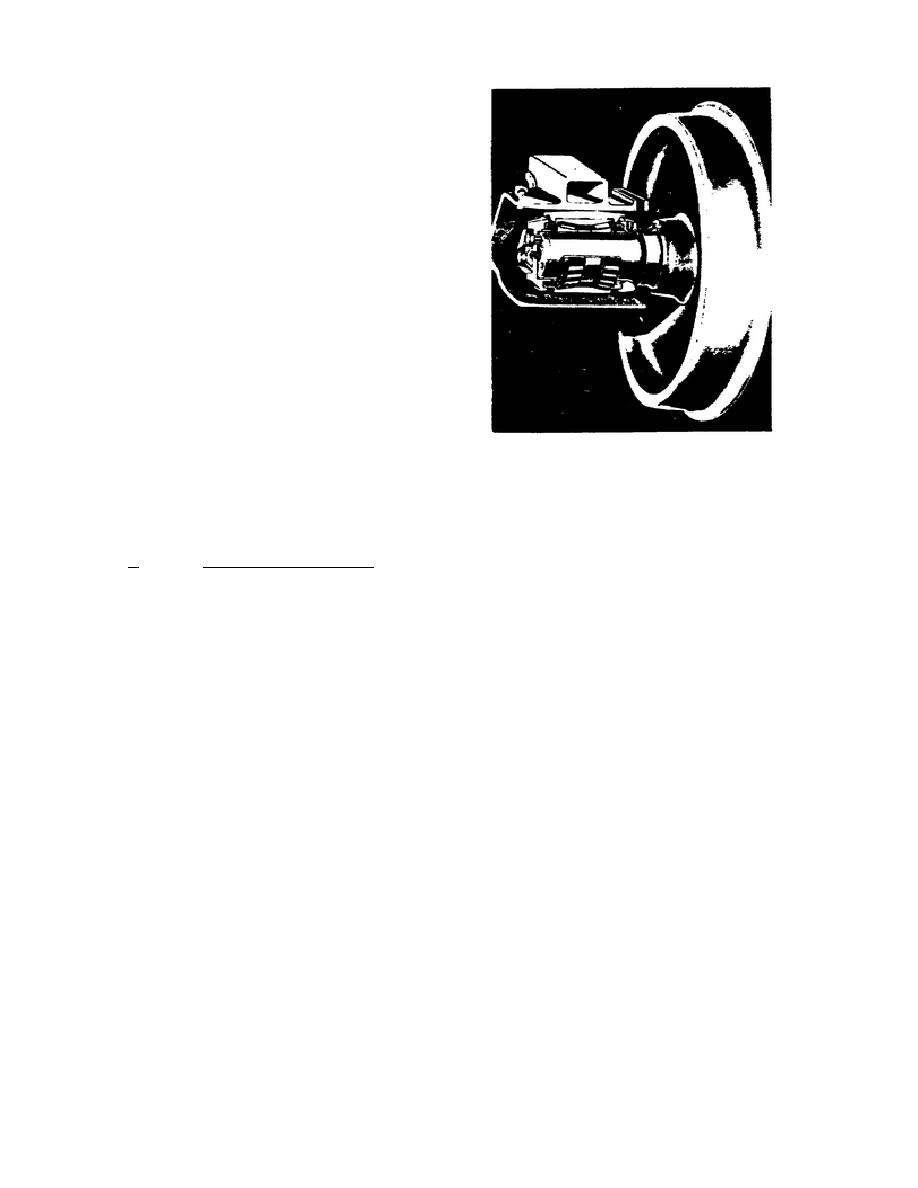
Journal roller bearings are
being used to a great extent
worldwide on both passenger and
freight
cars.
Because
these
bearings have sealed lubrication
units, they can run for 3 years
without
requiring
any
added
lubricant.
Also, they have almost
totally
eliminated
'hotbox"--
overheated
journal--problems,
provide better riding qualities for
the car, and lessen wheel and truck
wear.
Two general types are in
use: cylindrical and tapered hard
steel bearings fitted snugly to the
axle journal.
The tapered bearing
is shown in the insert.
3.5. COUPLERS
Railway cars are connected and disconnected by a coupler.
In the
continental United States (CONUS) and some foreign countries, the automatic
coupler is used; some other foreign countries use the hook-and-link coupler.
Both types are described in the subparagraphs following.
a. The automatic coupler, shown in figure 3.4, is best described as a
rotating hook. It is automatic only to the extent that it couples cars when
they are moved into contact with each other; it must be uncoupled manually.
The main parts of the automatic coupler are the head, knuckle and pin, and
shank.
(1) The head of the coupler has guard arms on which alining wings are
mounted.
This apparatus alines the coupler knuckles of opposing cars and
positions them for coupling.
(2) The knuckle and pin are the moving parts of the coupler that
perform the coupling action. Shaped like a hook, the knuckle rotates on a
pin; once it has rotated to the closed position, a block drops into place to
hold it closed:
(3) The shank is a continuation of the head providing a connection
with the draft gear. The shank transmits shock and pulling stress to the
draft gear which distributes them to the underframe of the car.
44



 Previous Page
Previous Page
